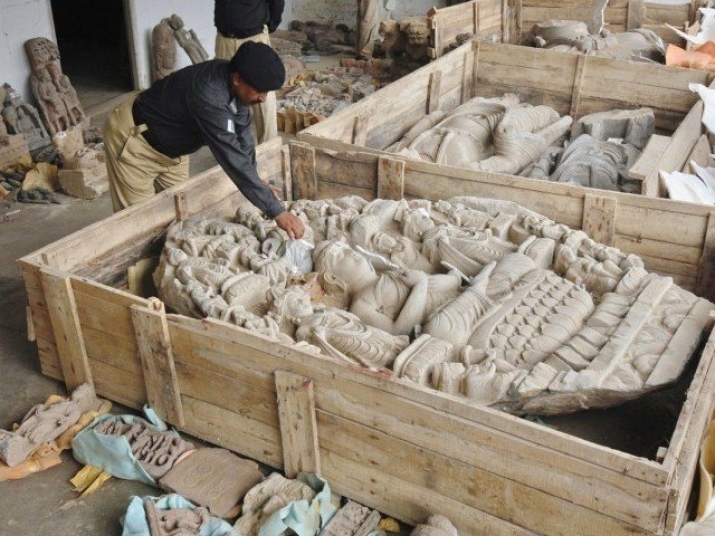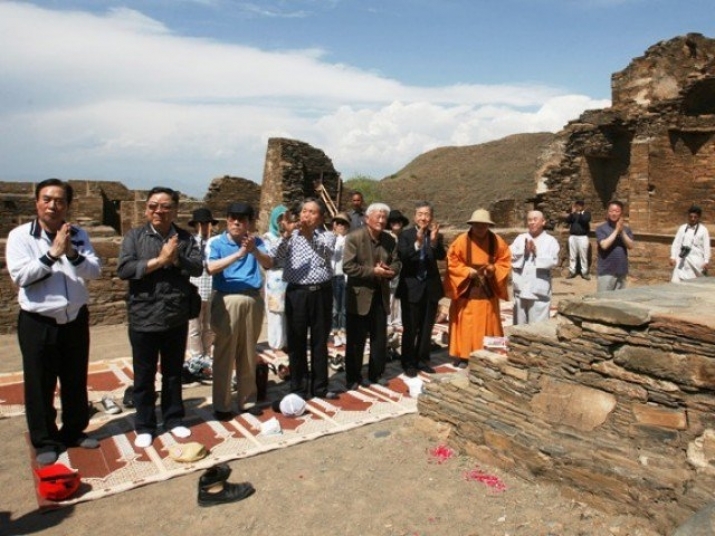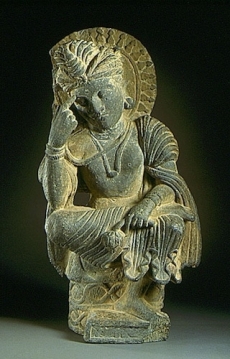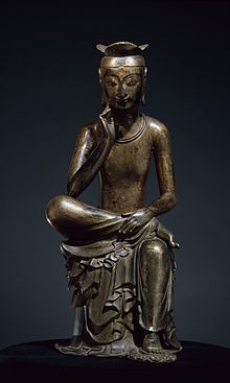NEWS
First exhibition of Gandhara Buddhist Antiquities Opens in South Korea
 The artifacts, packed in boxes, ready to be shipped to South-Korea. From tribune.com.pk
The artifacts, packed in boxes, ready to be shipped to South-Korea. From tribune.com.pkAbout forty artifacts belonging to the Gandhara civilization from Peshawar Museum in Pakistan’s Khyber Pakhtunkhwa province are currently on exhibit in Seoul, South Korea. The exhibition titled, “Gandhara through International Cooperation,” was inaugurated on 29 June with delegates from over 45 countries present to witness the ceremony, and will continue until 30 September this year.
The exhibit is jointly organized by the Inter-Art organization in Korea, and the Khyber-Pakhtunkhwa Directorate of Archaeology and Museums in Pakistan. The federal government of Pakistan issued a license for the exhibit after both countries reached an agreement with the terms and conditions of the exhibition.
The objects on display have an insurance value of about US$106 million dollars, and include 25 relics based on the life of the Buddha, and a reliquary of Kanishka, which dates back to the first year of the reign of Kushan Emperor Kanishka (c. 127-150 CE) and was discovered in 1992 in the relic chamber of the great stupa at Shah-Ji-ki Dheri in Peshawar.
 South Korean monks is offering prayers at Takht Bhai monastery complex in Pakistan. From tribune.com.pk
South Korean monks is offering prayers at Takht Bhai monastery complex in Pakistan. From tribune.com.pkAccording to Dr. Abdul Samad, director of the Khyber-Pakhtunkhwa Archaeology and Museums, the exhibition will run for three months to give the people of South Korea enough time to visit the Gandhara Buddhist remains and foster awareness among the South Korean public as to why they should visit Pakistan and Khyber Pakhtunkhwa's holy sites, monasteries, and archaeological ruins. “This exhibition will not only display the archaeological objects but also boost and promote religious tourism for which the province has great potential,” said Dr. Samad. (Dawn)
Asif Raza, the curator of Peshawar museum, said the exhibition will help to attract international tourists for the region and the museum by giving a glimpse into the rich archaeology of the region. “It will promote tourism and archeological site of the province.” (The Express Tribune)
South Koreans hold the collection of artifacts from Gandhara civilization in high regard since Buddhism was introduced to South Korea by monks hailing from what is now Khyber Pakhtunkhwa province. “[Khyber Pakhtunkhwa province] is a holy place for Koreans. Buddhism reached Korea from this part of the world through a monk named Maralanda [Maranatha] in 4th century CE,” Dr Samad explained. (Dawn)
 Maitreya in Meditation, Gandhara, Pakistan, 3rd–4th century From himalayanbuddhistart.wordpress.com
Maitreya in Meditation, Gandhara, Pakistan, 3rd–4th century From himalayanbuddhistart.wordpress.com Korean National Treasure No. 83 Maitreya in Meditation. From wikipedia.org
Korean National Treasure No. 83 Maitreya in Meditation. From wikipedia.orgKorean Buddhism can be directly traced back to the Gandhara civilization. The Gandharan monk Maranatha introduced Buddhism in Korea in 384 CE and many reference to Gandhara’s Greco-Buddhist art can be found there. For instance, the UNESCO World Heritage-listed Seokguram Grotto, part of Bulguksa Temple in Gyeongju, in South Korea’s Northern Gyeongsang Province, is thought to have been inspired by Gandharan art, and the Korean National Treasure No. 83, the bronze sculpture “Maitreya in Meditation,” is thought to have been based on Gandharan images.
Pakistani ambassador to South Korea Zahid Nasrullah Khan has emphasized in the past that Pakistan wants to build Buddhist cultural bridges with the Korean people. The current exhibition will not only showcase unique examples of Gandhara art but also highlight the centuries-old religious ties between South Korea and Pakistan. (Dawn)
See more
Gandhara artefacts to go on display for first time in S. Korea (Dawn)
Gandhara relics to be exhibited in Seoul (The Express Tribune)
Related features from Buddhistdoor Global
Diplomacy, Heritage, and Cultural Pride: Reviving the Buddhist Legacy of Islamic Pakistan
Takht-i-Bahi: The Jewel of Pakistan’s Cultural Heritage
Related news from Buddhistdoor Global
Korean Buddhism to Celebrate Gandharan Roots in Pakistan
Spotlight on Buddhist Rock Inscriptions in Pakistan’s Swat Valley
Preserving Buddhist Heritage Sites in India and Pakistan
7th Century Buddha Image in Pakistan Restored Nine Years After Islamist Desecration
Pakistan Sends Sacred Buddhist Relics to Sri Lanka for Vesak Festival














